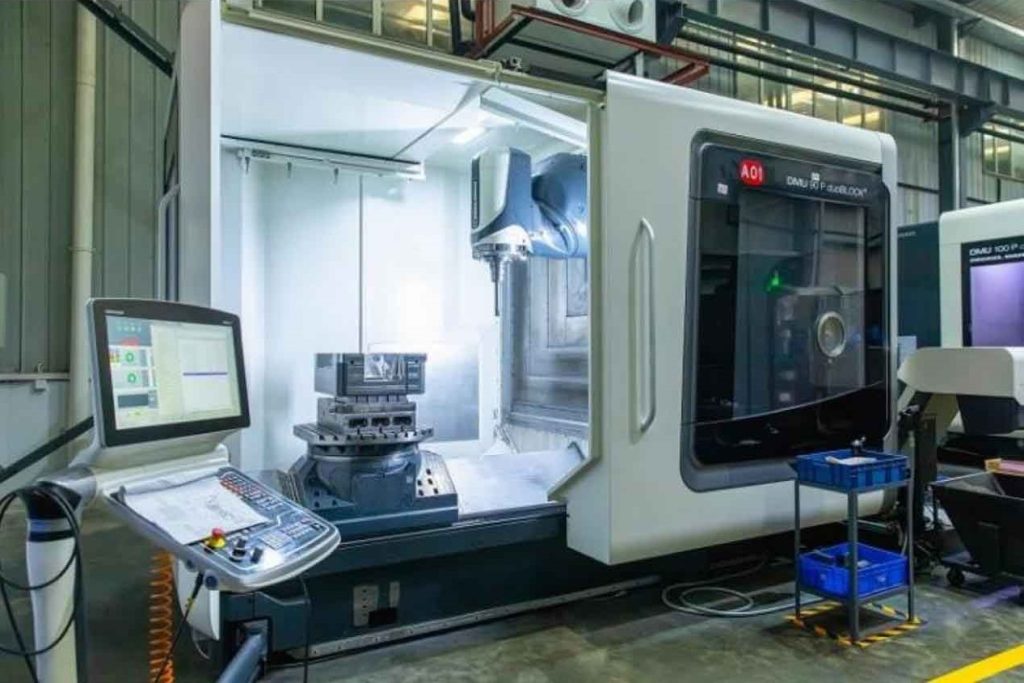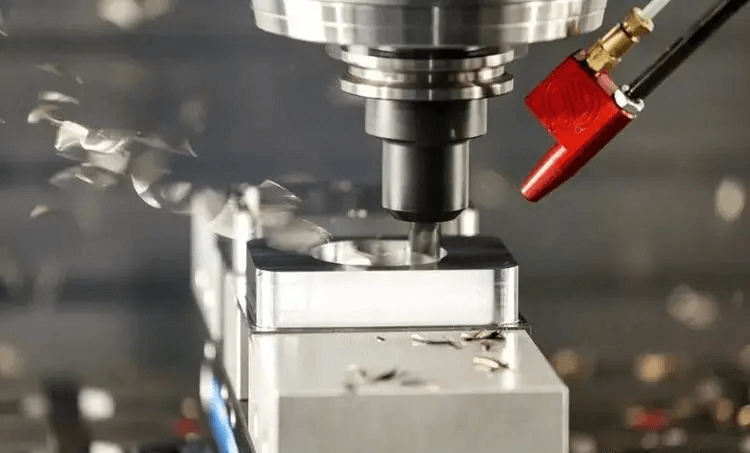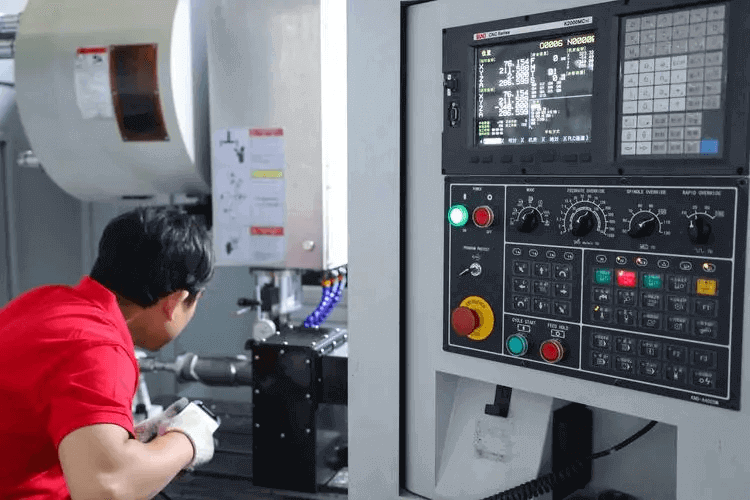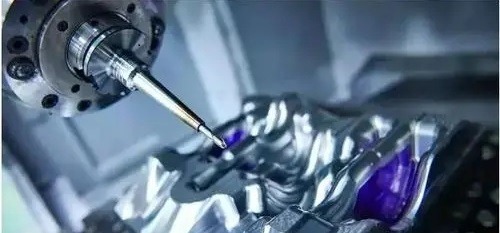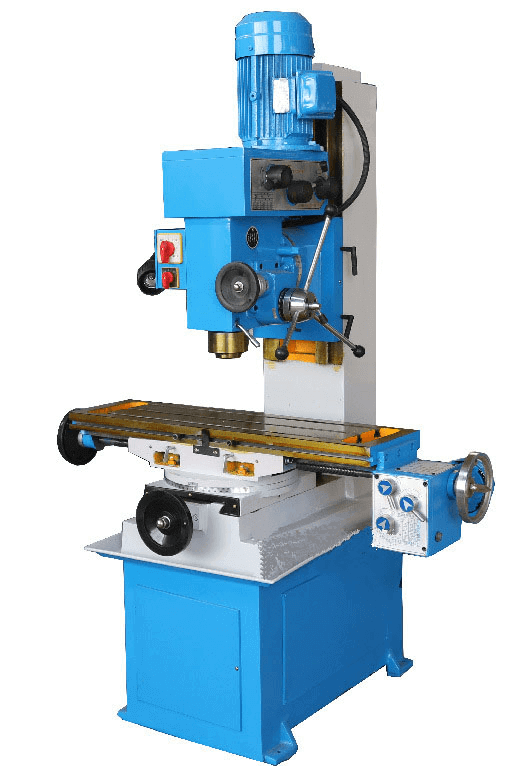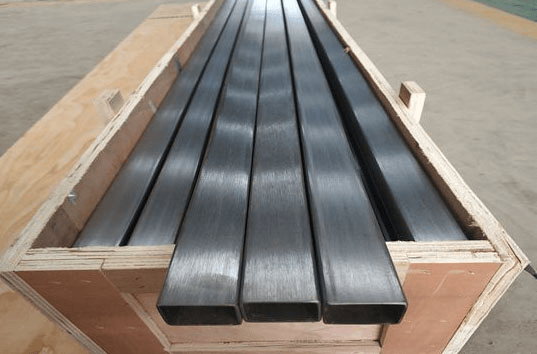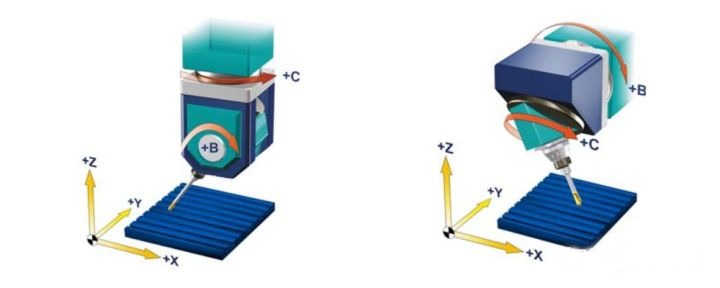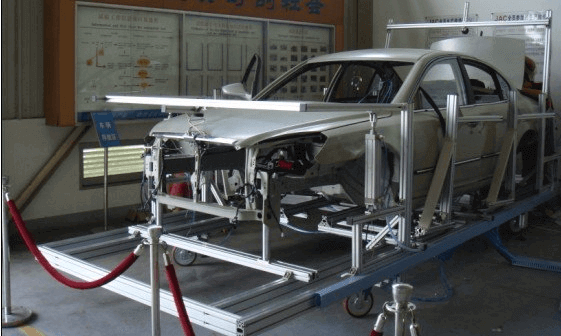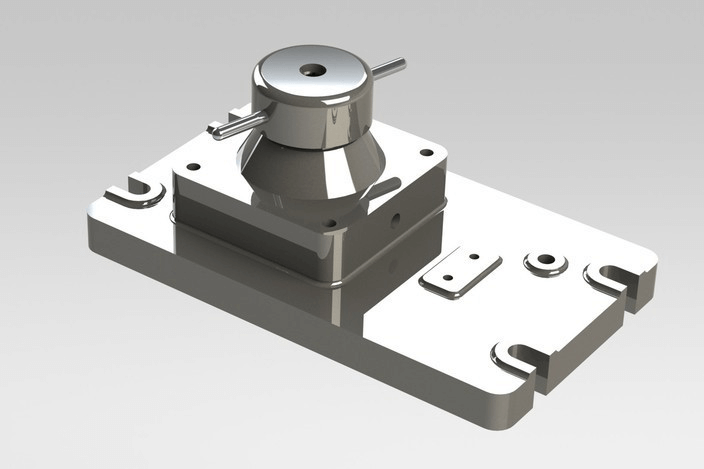Compared with external surface processing, the conditions of CNC machining are much worse, and it is more difficult to process holes than to process external circles. This is because:
- The size of the tool used for hole machining is limited by the size of the hole to be machined, and the rigidity is poor, which is prone to bending deformation and vibration;
- When machining a hole with a fixed-size tool, the size of the hole is often directly determined by the corresponding size of the tool, and the manufacturing error and wear of the tool will directly affect the machining accuracy of the hole;
- When machining holes, the cutting area is inside the workpiece, the chip removal and heat dissipation conditions are poor, and the machining accuracy and surface quality are not easy to control.
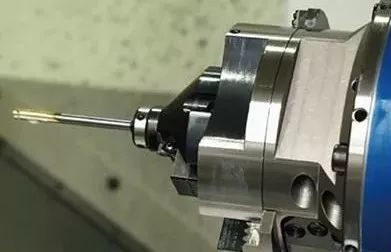
1. Drilling
Drilling is the first process of machining holes in solid materials, and the diameter of the holes is generally less than 80mm. There are two ways of drilling: one is the rotation of the drill; the other is the rotation of the workpiece. The errors generated by the above two drilling methods are different. In the drilling method with the drill bit rotating, when the drill bit is deviated due to the asymmetry of the cutting edge and the insufficient rigidity of the drill bit, the center line of the machined hole will be skewed or distorted. It is not straight, but the hole diameter is unchanged; on the contrary, in the drilling method in which the workpiece is rotated, the deviation of the drill bit will cause the hole diameter to change, while the hole centerline is still straight.
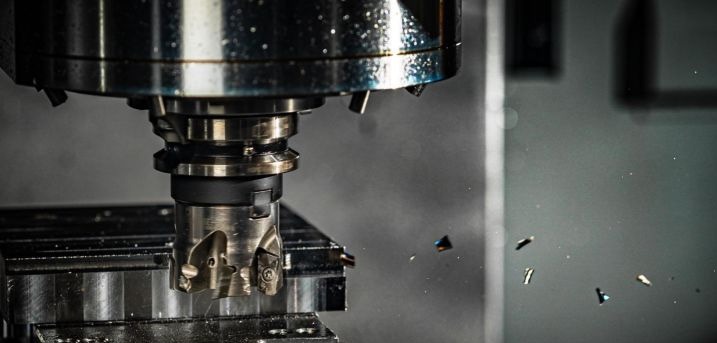
Commonly used drilling tools include twist drill, center drill, deep hole drill, etc., among which the most commonly used is the twist drill, and its diameter specification is as shown in the picture.
Due to structural limitations, the bending rigidity and torsional rigidity of the drill bit are both low, coupled with poor centering, the drilling accuracy is low, generally only reaching IT13 ~ IT11; the surface roughness is also large, and Ra is generally 50 ~12.5μm, but the metal removal rate of drilling is large, and the cutting efficiency is high. Drilling is mainly used to process holes with low-quality requirements, such as bolt holes, threaded bottom holes, oil holes, etc. For holes with high machining accuracy and surface quality requirements, they should be achieved by reaming, reaming, boring, or grinding in subsequent machining.
2. Reaming
Reaming is one of the finishing methods of holes, which is widely used in production. For smaller holes, reaming is a more economical and practical method than internal grinding and fine boring.
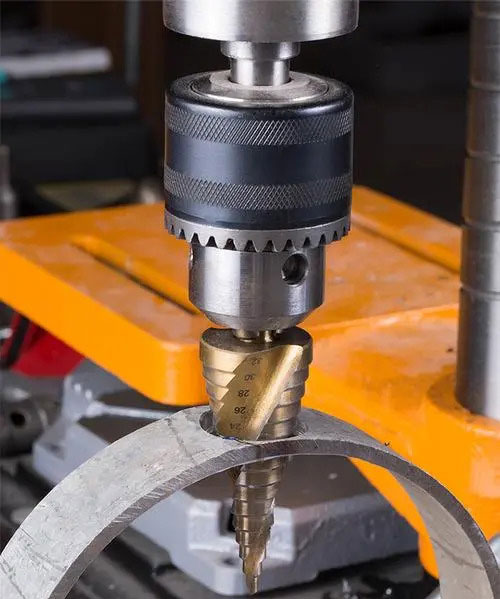
Reamer
Reamers are generally divided into two types: hand reamers and machine reamers. The handle of the hand reamer is straight, the working part is longer, and the guiding function is better. The hand reamer has two structures of integral type and adjustable outer diameter. There are two types of machine reamers, shank type, and sleeve type. Reamers can not only process circular holes but also taper holes can be processed with taper reamers.
Reaming technology and its application
The reaming allowance has a great influence on the quality of the reaming. If the allowance is too large, the load of the reamer is large, the cutting edge is quickly blunted, it is not easy to obtain a smooth machined surface, and the dimensional tolerance is not easy to guarantee; if the allowance is too small, If the tool marks left by the previous process cannot be removed, it will naturally not improve the quality of hole processing. Generally, the rough hinge allowance is 0.35~0.15mm, and the fine hinge is 01.5~0.05mm.
To avoid the formation of built-up edge, reaming is usually performed at lower cutting speeds (v < 8m/min for high-speed steel reamers for steel and cast iron). The value of the feed is related to the aperture to be processed. The larger the aperture, the larger the value of the feed. When the high-speed steel reamer processes steel and cast iron, the feed is usually 0.3~1mm/r.
When reaming holes, they must be cooled, lubricated, and cleaned with appropriate cutting fluid to prevent built-up edge and remove chips in time. Compared with grinding and boring, reaming has high productivity and is easy to ensure the accuracy of the hole; however, reaming cannot correct the position error of the hole axis, and the position accuracy of the hole should be guaranteed by the previous process. Stepped holes and blind holes are not suitable for reaming.
The dimensional accuracy of the reaming hole is generally IT9~IT7, and the surface roughness Ra is generally 3.2~0.8. For medium-sized holes with high precision requirements (such as IT7-level precision holes), the drilling-expanding-reaming process is a typical processing scheme commonly used in production.
3. Boring
Boring is a machining method that uses a cutting tool to enlarge a prefabricated hole. The boring work can be carried out on a boring machine or a lathe.
Boring method
There are 3 different machining methods for boring.
(1) The workpiece rotates and the tool feeds. Most of the boring on the lathe belongs to this boring method. The process characteristics are: the axis line of the hole after machining is consistent with the rotation axis of the workpiece, the roundness of the hole mainly depends on the rotation accuracy of the machine tool spindle, and the axial geometry error of the hole mainly depends on the feed direction of the tool relative to the rotation axis of the workpiece. position accuracy. This boring method is suitable for processing holes that have coaxiality requirements with the outer surface.
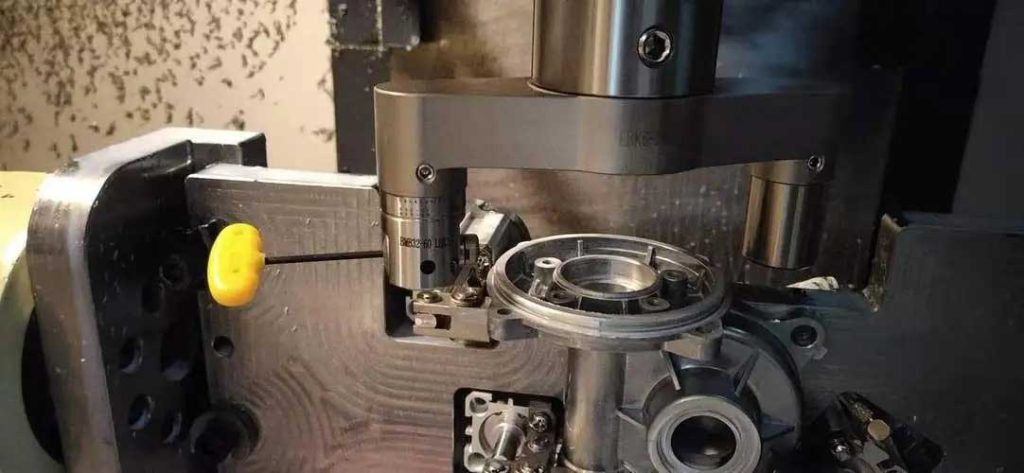
(2) The tool rotates and the workpiece makes a feeding motion. The spindle of the boring machine drives the boring tool to rotate, and the worktable drives the workpiece to make a feeding motion.
(3) When the tool rotates and makes a feeding motion, this kind of boring method is used for boring. The overhang length of the boring bar is changed, and the force and deformation of the boring bar are also changed. The hole diameter is small, forming a tapered hole. In addition, the overhang length of the boring bar increases, and the bending deformation of the main shaft due to its weight also increases, and the axis of the machined hole will be bent accordingly. This boring method is only suitable for short holes.
Diamond Boring
Compared with ordinary boring, diamond boring is characterized by a small amount of back cutting, small feed, and high cutting speed. It can obtain high machining accuracy (IT7~IT6) and a very smooth surface (Ra is 0.4~ 0.05 ). Diamond boring was originally processed with diamond boring tools, and now it is generally processed with cemented carbide, CBN, and synthetic diamond tools. Mainly used for processing non-ferrous metal workpieces, but also processing cast iron and steel.
The commonly used cutting quantities for diamond boring are: the back-cut amount of pre-boring is 0.2~0.6mm, and the final boring is 0.1mm; the feed rate is 0.01~0.14mm/r; the cutting speed is 100~250m/min when machining cast iron. 150~300m/min for steel, 300~2000m/min for processing non-ferrous metals.
To ensure that diamond boring can achieve high machining accuracy and surface quality, the machine tool (Diamond boring machine) used must have high geometric accuracy and rigidity. The main shaft of the machine tool is usually supported by precision angular contact ball bearings or hydrostatic sliding bearings, and high-speed rotating parts. It must be precisely balanced; in addition, the movement of the feeding mechanism must be very stable to ensure that the worktable can perform stable and low-speed feeding movement.
Diamond boring has good processing quality and high production efficiency and is widely used in the final processing of precision holes in mass production, such as engine cylinder holes, piston pin holes, and spindle holes on machine tool spindle boxes. However, it should be noted that when machining ferrous metal products with diamond boring, only boring tools made of cemented carbide and CBN can be used, and boring tools made of the diamond cannot be used, because the carbon atoms in diamond have a large affinity with iron group elements. , the tool life is low.
Boring Tool
Boring tools can be divided into single-edge boring tools and double-edge boring tools.
Technological characteristics and application scope of boring
Compared with the drilling-expanding-reaming process, the diameter of the hole is not limited by the size of the tool, and the boring has a strong error correction ability. The boring and positioning surfaces maintain high positional accuracy.
Compared with the outer circle of the boring hole, due to the poor rigidity and large deformation of the tool holder system, the heat dissipation and chip removal conditions are not good, and the thermal deformation of the workpiece and the tool is relatively large. The machining quality and production efficiency of the boring hole are not as high as those of the outer circle.
Based on the above analysis, it can be seen that boring has a wide processing range, and can process holes of various sizes and different accuracy levels. For holes and hole systems with large diameters and high dimensional and positional accuracy requirements, boring is almost the only processing. method. The machining accuracy of boring is IT9~IT7, and the surface roughness Ra is. Boring can be carried out on machine tools such as boring machines, lathes, and milling machines. It has the advantage of flexibility and is widely used in production. In mass production, to improve the boring efficiency, boring dies are often used.


